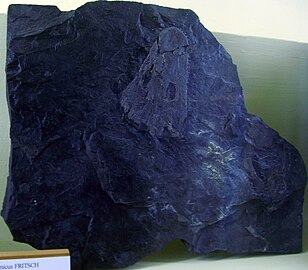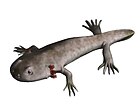Cochleosaurus
| Cochleosaurus Temporal range: Moscovian
~ | |
|---|---|

| |
| Skull in Vienna | |
| Scientific classification | |
| Kingdom: | Animalia |
| Phylum: | Chordata |
| Class: | Amphibia |
| Order: | †Temnospondyli |
| Family: | †Cochleosauridae |
| Subfamily: | † |
| Genus: | †Cochleosaurus Fritsch 1885 |
| Species | |
| |
| Synonyms | |
| |
Cochleosaurus ('spoon lizard') is a name of a tetrapod belonging to Temnospondyli, which lived during the late Carboniferous period (Moscovian, about 310 million years ago). The great abundance of its remains (about 50 specimens) have been found in the of the Czech Republic, near Nýřany in Central Europe and in the of Nova Scotia in North America.[1] It was a creature of medium size, measuring 120-160 centimeters. It is believed that Cochleosaurus was a semiaquatic ambush predator, hunting like modern crocodiles. Czech paleontologist Antonin Fritsch named the genus in 1885 in reference to the spoon-shaped processes on the supra-occipital bones at the back of the skull (from Latin cochlear "spoon" and Greek sauros "lizard").
Gallery[]

Restoration

Cochleosaurus bohemicus skull at the Museum für Naturkunde, Berlin
References[]
- ^ Cochleosaurus at Fossilworks.org
Further reading[]
- (1885), Fauna der Gaskohle und der Kalksteine der Permformation Bohmens. vol. 2, Prague, 107 pp.
External links[]
- Moscovian - Palaeos.com
- Temnospondyli - Palaeos.com
- Edopoids
- Carboniferous temnospondyls of Europe
- Prehistoric amphibian genera
- Paleozoic life of Nova Scotia
- Fossils of the Czech Republic
- Fossil taxa described in 1885
- Taxa named by Antonin Fritsch
- Prehistoric amphibian stubs
















